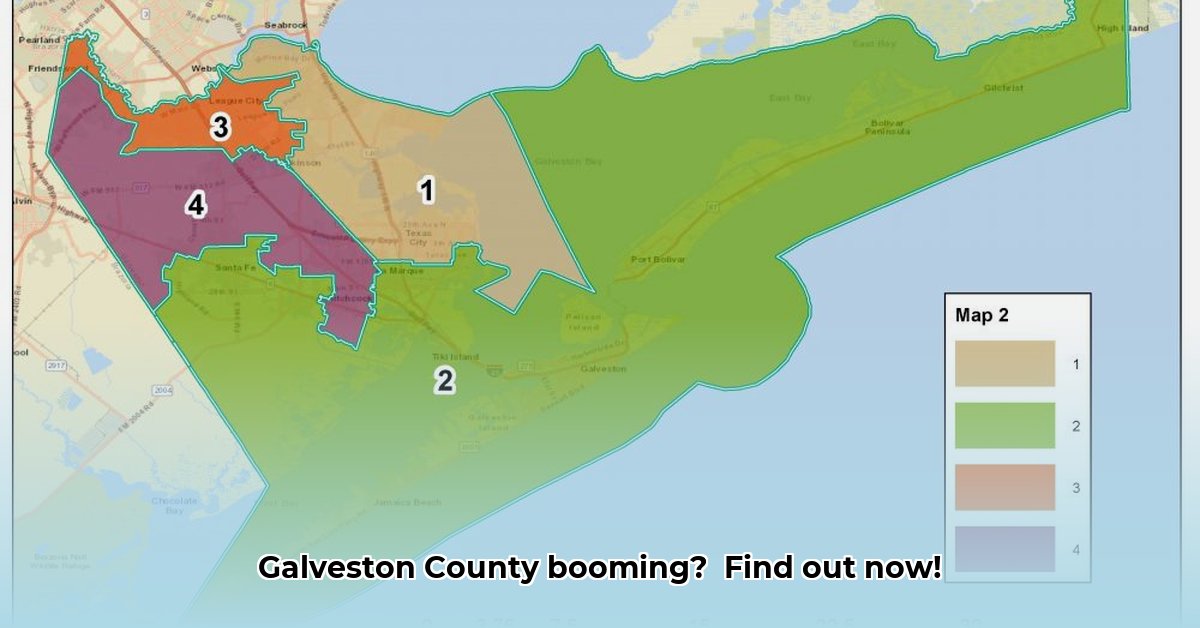
Galveston County is experiencing a period of rapid transformation. Since 2010, its population has surged by over 22 percent, a dramatic increase that's reshaping the county's demographic landscape. This growth, however, isn't simply a matter of more people; it's a complex interplay of ethnic shifts and an aging population, presenting both significant opportunities and considerable challenges. Understanding these trends is crucial for planning a sustainable and inclusive future for Galveston County.
A County Transformed: The Impact of Hispanic/Latino Growth
A major contributor to Galveston County's population boom is the remarkable increase in its Hispanic/Latino population. This growth significantly outpaces the overall population increase, painting a vivid picture of changing demographics. This isn't just a numerical shift; it represents a vibrant influx of culture, enriching the county's artistic, culinary, and business landscapes. However, this rapid growth necessitates ensuring equitable access to jobs, housing, and essential services for all residents, regardless of background. How can we ensure this burgeoning community feels fully integrated and empowered to participate in all aspects of Galveston County life?
An Aging Population: Meeting the Needs of Galveston County's Seniors
While new families contribute significantly to the county's growth, another critical trend is the substantial increase in the over-65 population. Since 2010, this demographic has more than doubled, highlighting the urgent need for proactive planning. Addressing the needs of this growing senior population requires a multifaceted approach. What strategies can best ensure that our seniors can age with dignity, access necessary healthcare, and maintain active and fulfilling lives within the community?
Slower Growth, but Persistent Trends
While the overall rate of population increase has recently moderated, the underlying demographic shifts remain potent. The county's age and ethnic composition continue to evolve, demanding continued attention to planning and resource allocation. This slower growth rate offers a valuable opportunity for thoughtful, deliberate action to address the challenges and capitalize on the opportunities presented by these changes.
Actionable Steps: A Collaborative Strategy for Success
Successfully navigating these demographic shifts requires a collaborative, multi-sectoral strategy. Here's a breakdown of critical action areas:
County Government: Modernizing infrastructure (roads, water systems, etc.) is paramount to support the growing population. Equally important is the implementation of programs that ensure equitable access to information and services for the Hispanic/Latino community, including multilingual services and culturally sensitive outreach. Strategic, long-term planning is non-negotiable.
Healthcare Providers: Significant expansion of healthcare facilities and recruitment of medical professionals are crucial, coupled with a focus on bilingual staff and culturally competent care to address the needs of the growing and aging population.
Education System: Proactive planning for school facilities and resources is essential to avoid overcrowding. Developing programs that support students from diverse backgrounds, including bilingual education and culturally relevant curricula, is critical for future success.
Businesses: Businesses must adapt to reach the growing Hispanic/Latino consumer base through diverse marketing and advertising strategies. Investing in workforce training programs that reflect the county's changing demographics is essential for long-term economic vibrancy.
Navigating the Future: A Risk Assessment
While population growth offers numerous advantages, potential risks must be acknowledged and proactively mitigated.
| Risk Category | Probability | Impact | Mitigation Strategies |
|---|---|---|---|
| Infrastructure Strain | High | Significant service disruptions | Substantial investment in infrastructure upgrades; proactive planning for future growth. |
| Healthcare Capacity | High | Limited access to quality care | Expansion of healthcare facilities; recruitment of medical professionals, including bilingual staff. |
| Educational Resources | Medium | Overcrowding, reduced quality | Strategic planning and resource allocation for schools; building new schools; hiring more teachers. |
| Economic Disparities | Medium | Unequal opportunities | Targeted economic development; job creation; workforce training for diverse communities. |
| Social Integration | Low | Community cohesion challenges | Community engagement promoting cultural understanding and inclusivity. |
Building a Thriving, Inclusive Community
The future of Galveston County is not predetermined. By proactively addressing demographic shifts and seizing presented opportunities, a thriving and inclusive community can be built. This requires concerted effort from all sectors, strategic planning, and a firm commitment to fostering a welcoming environment where everyone can prosper. The time for action is now.